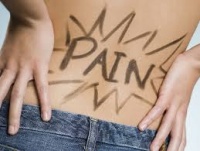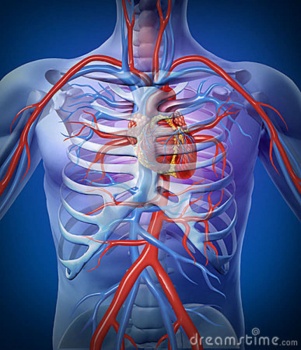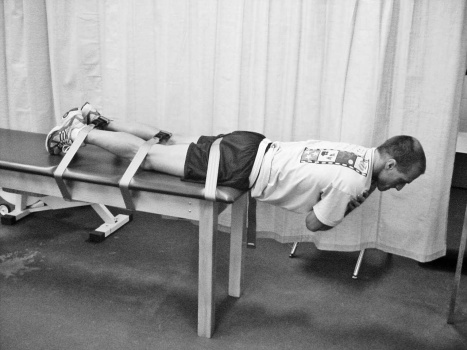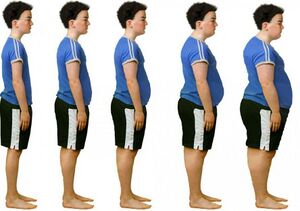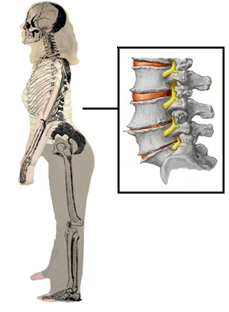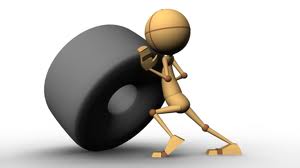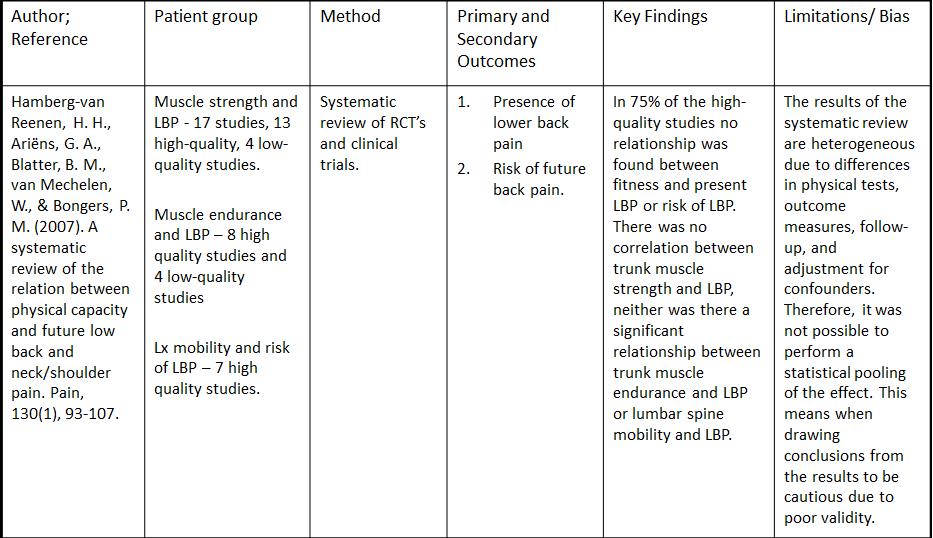Fitness and Low Back Pain
Original Editor - Peter Copeland, George Smith, Bryn Roberts as part of the Nottingham University Spinal Rehabilitation Project
Top Contributors - Peter Copeland, George Smith, Lucinda hampton, Bryn Roberts, Kim Jackson, Laura Ritchie, Evan Thomas, Wanda van Niekerk, 127.0.0.1, WikiSysop, Shaimaa Eldib, Aminat Abolade, Fahad Bin Aftab and Admin
Introduction[edit | edit source]
Low back pain is an umbrella of conditions with 80% of adults estimated to experience LBP at some point during their life [1]. Low back pain refers to pain between the bottom of the ribs and the buttock crease.
- A high physical fitness level, and especially muscle endurance in the back muscles, is associated with lower risk of back pain[2]
- A harmful misconception is that exercise should be avoided when LPB is present. Understandably, many patients are reluctant to exercise out of the fear that any exercises or stretching will aggravate their existing back pain. They may become reluctant to exercise and rely on medications.[3]
- Physical activity (PA) to increase aerobic capacity and muscular strength, especially of the lumbar extensor muscles, is important for patients with chronic LBP in assisting them to complete activities of daily living.
This article focuses on non specific chronic low back pain (NSCLBP) and its relations with fitness.
Fitness [edit | edit source]
Physical fitness is a set of attributes that people have or achieve. Being physically fit has been defined as the ability to carry out daily tasks with vigour and alertness, without undue fatigue and with ample energy to enjoy leisure-time pursuits and meet unforeseen emergencies[4]
The five components of physical fitness and the Gold Standards for measuring are:
- Cardiorespiratory Endurance - VO2 max per Kg of body mass [5]
- Muscular Endurance - Currently no Gold Standard measurment for muscular endurance
- Muscular Strength - Isokinetic Dynamometry [6] VO2 max normative values
- Body Composition:- The current Gold Standard is a Four-Compartment model of measurements most commonly consisting of Mass, Total Body Volume, Total Body Water and Bone Mineral Content.[7]
- Flexibility - Optical Gold Standards such as the Vicon Motion Tracking System[8]
Cardiorespiratory Endurance[edit | edit source]
Aerobic exercise stimulated the cardiovascular system. Aerobic exercise can benefit CLBP as it increases the blood flow and nutrients to the soft tissues in the back, improving the healing process and reducing stiffness that results in back pain. 30–40 min of aerobic exercise increases the body’s production of endorphins. Increasing the body’s endorphin production is a natural alternative for pain relief for the body and can reduce CLBP. Rehabilitation involving aerobic exercise are a conservative method for reducing CLBP, and could prevent patients relying on medication for pain reduction.
- A low aerobic fitness level is associated with CLBP
- Maximum oxygen consumption (VO2max) is found to be significantly lower by 10 mL/kg in men and by 5.6 mL/kg in women with CLBP compared to men/women without.
Smokers have a higher rates of CLBP due in part to a decreased in arterial oxygen to the core muscles, leading to muscle fatigue and pain.[9]
Muscular Endurance [edit | edit source]
Muscular Endurance is the ability of the muscle to exert a submaximal force repeatedly over a sustained period of time.
- Patients with low back pain have reduced lumbar extensor muscular endurance in comparison with non-sufferers.[10] [11]See Biering-Sorenson Test.
- Abdominal muscular endurance in low back pain sufferers is significantly decreased in contrast to those in the normal health population [12]
- Lumbar fatigue as a result of low muscular endurance has been shown to reduce the person’s ability to sense the positioning of the lumbar spine and that 25% of people with chronic LBP (n=57) had severely impaired ability in controlling the position of the lumbar spine after a fatiguing task.[13]
- Physiologically in patients with lower back pain, it has been shown they have a higher percentage of fast type I glycolytic fibres compared to the slow oxidative fibres, this can be expected to render them less resistant to fatigue, where-as non-LBP people have a much higher percentage of type II glycolytic fibres giving them better muscular endurance helping prevent lower back pain.[14]
Body Composition [edit | edit source]
The body is composed of water, protein, minerals, and fat. A two-component model of body composition divides the body into a fat component and fat-free component. Body fat (storage fat) in excess can increase susceptibility to chronic illness, health complications, and LBP. Numerous studies have been conducted highlighting the relationship between increased fat content and the likelihood/prevalence of lower back pain.
- A study conducted in 2003 [15] found that there was a moderate positive relationship between obesity and lower back pain, however the results were based on the BMI calculation which does not definitively measure body fat content.
- In a study conducted by Urquhart 2011 which took into account the amount of body storage fat[16] and it was evident that there was a relationship between obesity and lower back pain
It is the common belief that an increase in body weight alters spinal biomechanics and loading, creating excess strain to be put through certain structures eg Obesity can lead to altered body positions such as exaggerated lumbar lordosis which will cause an alteration in spinal loading mechanics.
Flexibility[edit | edit source]
This is the range of movement available at any particular joint of the body. Patients presenting with low back pain often display significant reductions in degrees of several movements at the pelvis and trunk. Adequate flexibility of the lumbar spine enhances functional mechanical advantage, while spasmodic or shortened back muscles adversely affect spinal mechanics [17]. Tightness in the hip flexors can reduce pelvic mobility and therefore put excess strain on the lumbar spine during certain disciplines of movement – especially into flexion, following that, tight hamstring and hip extensors can also contribute to an exaggeration in the lordotic curve, which can potentially affect spinal loading mechanisms and lead to injury [12][18]. The tightness in hip flexors and hamstrings can lead to a Sway Back posture (see figure). In this posture the muscular tightness causes an anterior pelvic tilt and therefore excessive lumbar extension which compresses the lumbar vertebra - this position can predispose patients to lumbar facet sydnrome[19].
The relationship between flexibility and lower back pain, however, is still largely based around theory and there are yet to be a number of high-quality experiments/investigations to either support or refute this hypothesis.
Strength and Low Back Pain[edit | edit source]
Muscle strength is the contractile force a muscle is able to produce.
The large muscles of the back (See anatomy section) are often thought of as synonymous with back strength.[20] It is a commonly held belief that having 'strong' back muscles will support the back and prevent back pain however there is conjecture in the literature surrounding this theory.
Many common exercises such as prone extensions, deadlifts, and low-rows are thought to strengthen the back muscles and 'stabilize' the spine and help prevent future back pain.
Muscle strengthening exercises form part of the NICE treatment guidelines for Early management of persistent non-specific low back pain.[21]

Measures of Back Strength[edit | edit source]
There are a variety of measures targeted at assessing muscular strength e.g. one rep max, isokinetic dynamometry, manual muscle testing etc.
Muscle strength with regards to the lower back is commonly researched as a proxy measure of ‘physical capacity’ which also includes muscle endurance and joint mobility ( [22] ) although there is a lack of sufficient high quality evidence surrounding reproducibility of current physical capacity measures in healthy subjects and in patient groups. ( [23] ). When researching lower back strength in relation to the prevalence of LBP, isokinetic maximal flexion and extension, calculated with an isokinetic dynamometer, isoinertial dynamic testing and isokinetic lifting force are commonly used ( [24] There is some evidence to show that isokinetic measurement is reproducible and valid ( [25] )
| [26] |
Evidence Review[edit | edit source]
A systematic review from 2007 [22] evaluated evidence on the relationship between physical capacity and future low back and neck/shoulder pain. It was the first systematic review of longitudinal studies assessing the link between physical capacity and LBP.
Thirteen high-quality studies reported no association between trunk muscle strength and future risk of low back pain. The risk ratios were insignificant between low and high isometric strength (0.6 and 1.2 respectively), however, five high-quality studies have shown that poor trunk muscle strength is a significant predictor of LBP and two other high-quality studies found high strength as a risk factor. The results of this systematic review, therefore, are inconclusive one way or another in terms of the relationship between trunk strength and LBP. The review is further summarised in the table below.
A more recent study looking into LBP in male adolescents found isometric and isoinertial trunk performance was not significantly associated with LBP although they did find that regular sports participation was associated with LBP (93.9%:67.9% LBP + sport: No LBP + sport) [27].
Another paper by [20] evaluating the strength and cross-sectional area of extensor muscles in chronic LBP patients states that ‘weakness of the back muscles can lead to LBP’. The evidence this paper has used to support their own research actually contradicts the basis of their paper and is highlighted here as a good example of low-quality research in the area based on commonly held beliefs rather than evidence-based theory.
Clinical Relevance[edit | edit source]
The research is inconclusive with regards to strength and low back pain however there is good evidence that poor trunk muscle strength is a risk factor for LBP. The evidence has so far failed to establish causality. Clinical guidance e.g. NICE guidelines still recommend strength exercises as part of a rehab program for BP.
Bottom Line[edit | edit source]
An argument can be made for or against using strengthening exercises as a preventative measure for back pain More high-quality research is needed to determine if either low or high strength is a risk factor for LBP.
Overall we have found that there is insufficient high-quality evidence in the area of fitness and prognosis of future back pain due to the lack of prospective studies. Many of the studies fail to use gold-standard measures as a reference, though we have shown with lower quality evidence that obesity, low isometric strength, and reduced muscular endurance are related to LBP however the literature is indecisive of the causality.
References[edit | edit source]
- ↑ Palmer KT, Walsh K, et al. Back pain in Britain: comparison of two prevalence surveys at an interval of 10 years BMJ 2000
- ↑ E spine Exercise and Fitness to Help Your Back Available:https://www.spine-health.com/wellness/exercise/exercise-and-fitness-help-your-back (accessed 1.2.2022)
- ↑ Andersen LB, Wedderkopp N, Leboeuf-Yde C. Association between back pain and physical fitness in adolescents. Spine. 2006 Jul 1;31(15):1740-4.Available: https://pubmed.ncbi.nlm.nih.gov/16816772/ (accessed 1.2.2022)
- ↑ President's Council on Physical Fitness and Sports: Physical Fitness Research Digest. Series 1,No.1, Washington DC,1971.
- ↑ Mota, Jorge, et al. "Association of maturation, sex, and body fat in cardiorespiratory fitness." American Journal of Human Biology 14.6 (2002): 707-712.
- ↑ Stark, Timothy, et al. "Hand-held dynamometry correlation with the gold standard isokinetic dynamometry: a systematic review." PM&R 3.5 (2011): 472-479.
- ↑ Wilson, J. P., Mulligan, K., Fan, B., Sherman, J. L., Murphy, E. J., Tai, V. W., ... & Shepherd, J. A. (2012). Dual-energy X-ray absorptiometry–based body volume measurement for 4-compartment body composition. The American journal of clinical nutrition, 95(1), 25-31.
- ↑ Mohamed, Abeer A., et al. "Comparison of Strain-Gage and Fiber-Optic Goniometry for Measuring Knee Kinematics During Activities of Daily Living and Exercise." Journal of biomechanical engineering 134.8 (2012).
- ↑ Power, C., Frank, J., Hertzman, C., Schierhout, G., & Li, L. (2001). Predictors of low back pain onset in a prospective British study. American Journal of Public Health, 91(10), 1671-1678.
- ↑ Andersen, J. S. (2007). Physical fitness and low back pain: Performance-based and self-assessed physical fitness as risk indicator of low back pain among health care workers and students. Det Nationale Forskningscenter for Arbejdsmiljø; Københavns universitet. Det Sundhedsvidenskabelige fakultet.
- ↑ Biering-Sorenson, F. (1984). Physical measurements as risk indicators for low back trouble over a one-year period. Spine, 9, 106-119.
- ↑ 12.0 12.1 Foster, D. N. & Fulton, M. N. (1991). Back pain and the exercise prescription. Clinics in Sports Medicine, 10, 187-209.
- ↑ Taimela, S., Kankaanpää, M., & Luoto, S. (1999). The effect of lumbar fatigue on the ability to sense a change in lumbar position: a controlled study. Spine, 24(13), 1322.fckLRChicago (lumbar positioning)
- ↑ Mannion, A. F., Weber, B. R., Dvorak, J., Grob, D., & Müntener, M. (1997). Fibre type characteristics of the lumbar paraspinal muscles in normal healthy subjects and in patients with low back pain. Journal of Orthopaedic Research, 15(6), 881-887.
- ↑ Bener, A., Alwash, R., Gaber, T. and Lovasz,G. 2003. Obesity and Low Back Pain. Coll. Antropol. 27 (2003) 1: 95–104
- ↑ Urquhart, D.M. 2011, Higher Body Fat Linked to Increased Back Pain. Spine 9/1/2011 Edition. Lippincott Williams and Wilkins, Philadelphia
- ↑ Farfan, H. F. (1975). Muscular mechanism of the lumbar spine and the position of power and efficacy. Orthopaedic Clinics of North American, 6, 135-144.
- ↑ Plowman, S. A. (1992). Physical activity, physical fitness, and low back pain. In J. O. Holloszy (Eds.), Exercise and Sport Sciences Reviews (pp. 221-242). Baltimore: Williams & Wilkins.
- ↑ Swedan, N. (2001) Women's Sports Medicine and Rehabilitation, Lippincott Williams & Wilkins, UK.
- ↑ 20.0 20.1 Lee HJ, Lim WH, Park JW, Kwon BS, Ryu KH, Lee JH, Park YG. The Relationship between Cross Sectional Area and Strength of Back Muscles in Patients with Chronic Low Back Pain. Ann Rehabil Med. 2012
- ↑ NICE : CG88 Low back pain: Early management of persistent non-specific low back pain 2009
- ↑ 22.0 22.1 Hamberg-van Reenen HH, Ariëns GAM, Blatter BM, Mechelen W, Bongers PM. A systematic review of the relation between physical capacity and future low back and neck/shoulder pain. Pain. 2007
- ↑ Essendrop M, Maul I, Läubli T, Riihimäki H, Schibye B. Measures of low back function: a review of reproducibility studies. Clinical Bio-mechanics (Bristol, Avon). 2002
- ↑ Takala E P, Viikari‐Juntura E. Do functional tests predict low back pain? Spine 2000
- ↑ Dvir Z, Keating J. The reproducibility of isokinetic trunk extension: a study using very short range of motion. 2001 Clin Biomech
- ↑ Isokinetic System Con-Trex. 08 Isokinetic measurement trunk on Con-Trex TP trunk module.mov. Available from: http://www.youtube.com/watch?v=xEhLr5y0wBE [last accessed 29/11/15]
- ↑ Balagué F, Bibbo E, Mélot C, Szpalski M, Gunzburg R, Keller TS. The association between isoinertial trunk muscle performance and low back pain in male adolescents. Eur Spine J. 2010;
